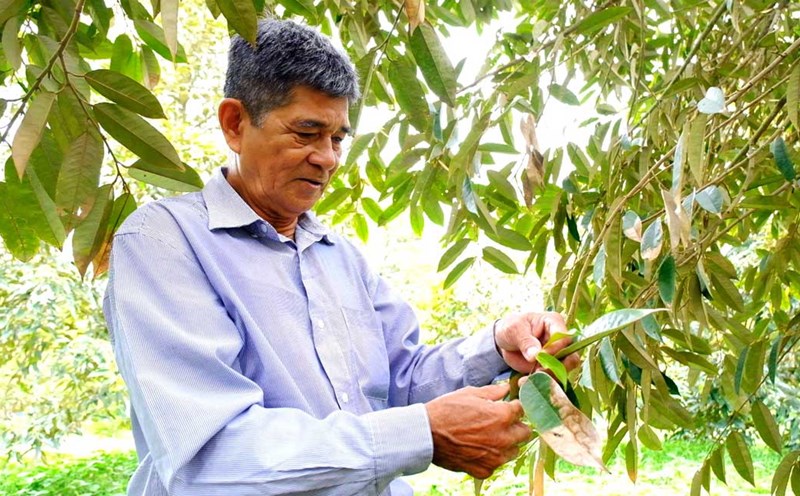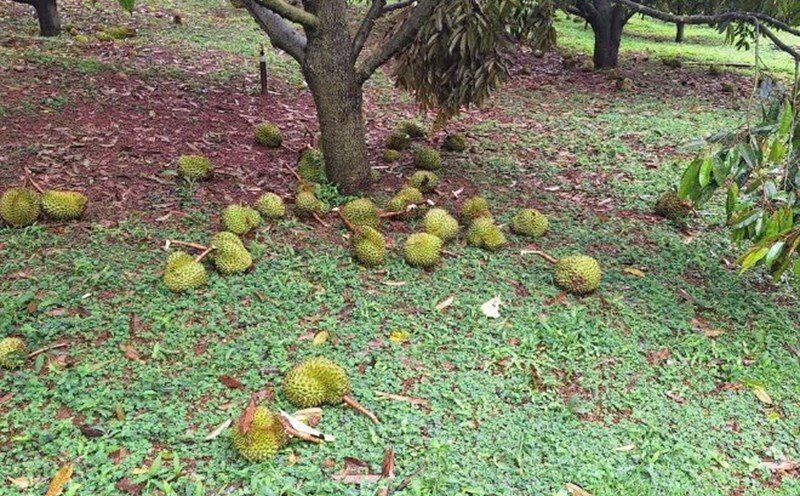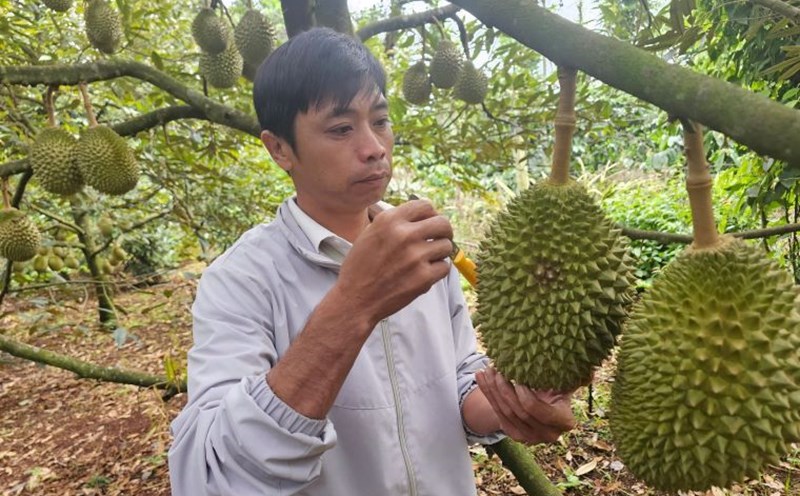The strength of durian trees
According to statistics, Lam Dong province has 43,960 hectares of durian. Of which, the business period area accounts for 50.2% of the total durian area in the province. The total output for the 2025 crop is estimated at about 266,700 tons.
To date, the area of durian applied high technology for production has reached over 7,200 hectares; VietGAP safety certification has reached 1,015 hectares.
The Provincial People's Committee has recognized the durian production area using high technology in Ha Lam commune, the old Da Huoai district (now Da Huoai 2 commune) with a scale of 300 hectares.
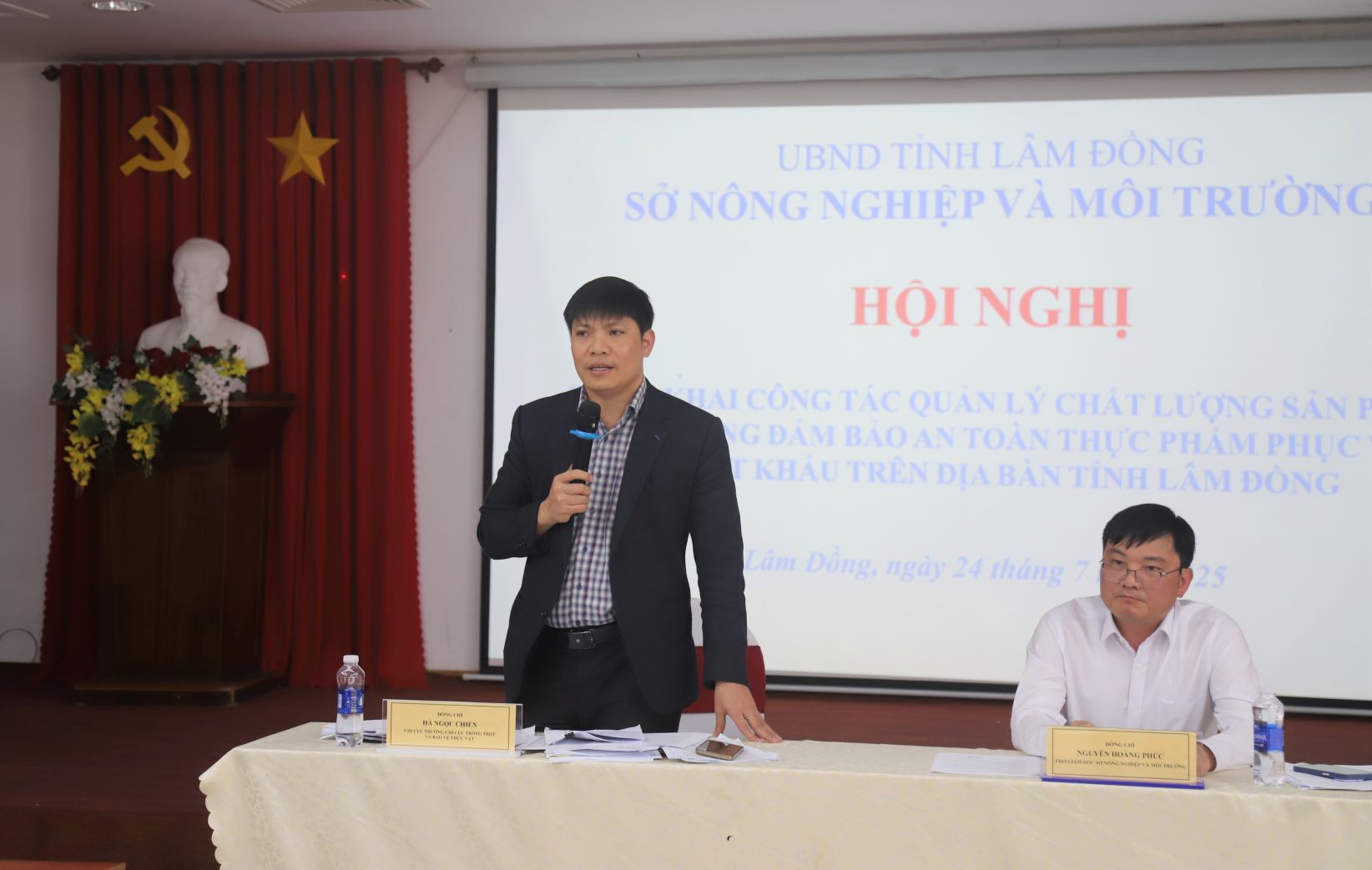
The whole Lam Dong province has 133 enterprises and cooperatives purchasing durian for export to the main market, China.
The whole Lam Dong province has been granted 337 growing area codes and 53 durian packaging facility codes for export.
Recently, the Lam Dong Province Crop and Plant Protection Department has supervised 134 growing area codes and 12 durian packaging facilities for export to the Chinese market.
This agency also joined the inspection team of the Department of Crop Production and Plant Protection to monitor 10 growing areas and 2 packaging facilities.
Recently, from July 14 to 17, the Department has joined the Chinese expert delegation in comprehensively monitoring the two growing areas and two durian packaging facilities in the province.
Regarding the control of export product quality, from the beginning of 2025 to now, the Department has collected 234 durian samples to analyze the waste of pesticides, heavy metals cadmium and lead, and assess pests (xanth worms).
The results showed 4 lead contamination samples, but none exceeded the threshold; there were 6 cadmium contamination samples, of which 1 sample was contaminated beyond the permitted limit from China of (0.074/0.05 mg/kg).
After receiving the analysis results, the Department of Agriculture and Environment has notified cadmium growing areas and requested strict implementation of measures to comply with the regulations of the importing country and Vietnam.
Many difficulties need to be resolved
Representatives of cooperatives and households have raised difficulties and proposed that the authorities remove and tighten the management of growing area codes and packaging facilities. Some cooperatives have growing area codes but are not contracted by enterprises to purchase durian.
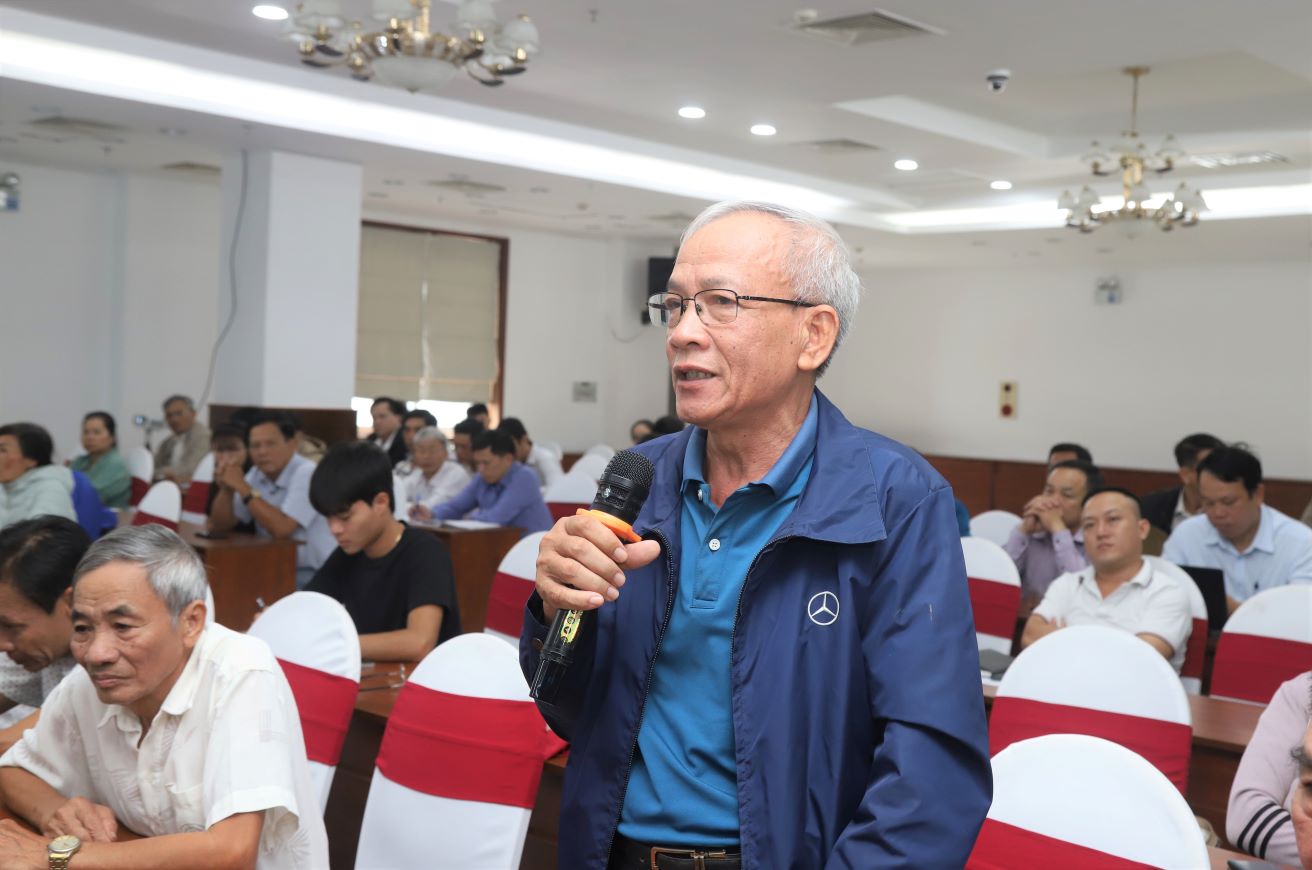
The situation of some authorized enterprises taking advantage of growing area codes to purchase from other places has affected the quality of durian issued with codes.
Most durian purchasing enterprises link with warehouses to purchase and package export products, while cooperatives with growing area codes must find their own sources in warehouses to sell durian.
On the other hand, the linkage between durian production cooperatives granted growing area codes and enterprises authorized to grow growing area codes is not closely tied in the investment and product packaging process for farmers.
That has caused farmers to face disadvantages related to durian purchase prices and support policies from enterprises authorized to grow growing area codes.
On the side of durian purchasing enterprises and packaging facilities, it is said that most of the growing area codes are being linked by cooperatives and authorized by enterprises outside the province.
Many durian purchasing enterprises in Lam Dong province are having difficulty accessing growing area codes to purchase durian for export. Therefore, State management agencies need to have a mechanism for businesses in the province to access growing area codes when purchasing durian.
Some businesses have difficulty preserving fresh durian for export due to the lack of specific instructions. The current preservation process is built by businesses themselves and the choice of preservatives.
Mr. Nguyen Hoang Phuc, Deputy Director of Lam Dong Department of Agriculture and Environment, emphasized that in order to export durian sustainably, all parties in the value chain need to cooperate closely in production, preservation, processing and export.
China is tightening control of pesticide residues, heavy metals and emulsion in durian. If not well controlled, this industry risks having its code revoked.
Mr. Nguyen Hoang Phuc suggested that the authorities of communes and wards strengthen guidance and create conditions for businesses and cooperatives to build growing area codes.
Localities should integrate a program to guide the use of fertilizers and legal pesticides. Durian growers need to comply with the production process and limit the use of fertilizers and cadmium-containing drugs.
Enterprises and packaging facilities are not allowed to use O gold in processing and preserving durian, and must comply with the one-way packaging process, traceability and equipment investment according to the regulations of the importing country.

